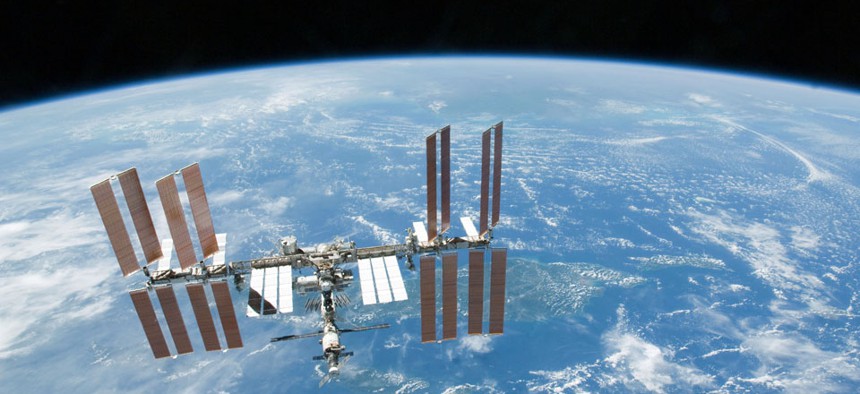2 Spiffy—and Privately Owned—New Cameras Were Installed on the International Space Station Today

NASA/AP File Photo
They’re so high-res that they’ll see people spelling out letters in a field.
Two cameras have been installed on the International Space Station (ISS), according to NASA representatives on a live webcast.
The two devices—a high-resolution video camera and a medium-resolution still camera—are operated by the Canadian firm Urthecast (pronounced Earth-cast). The first such cameras on the ISS, they will capture imagery of the Earth that can be viewed and purchased by consumers and businesses.
It will take some time before it’s clear that the cameras both function perfectly.
The installation means that all three of the venture-funded Earth-observation startups now out of stealth mode—Urthecast, Planet Labs, and Skybox—have cameras in orbit.
As I wrote earlier this month, Urthecast boasts that it will stream video of Earth on its website mere hours after it was photographed. It hopes to sell both video and still imagery to consumers and businesses. Because the ISS orbits lower than other satellites, it will also capture imagery of places which other Earth-observing satellites cannot see as directly.
“I tend to think we’ll get pictures no one’s ever seen before,” the company’s CEO, Scott Larsen, told me in December.
Larsen envisioned parties, events, even wedding proposals being timed to the station’s passage overhead. A crowd of people might form massive letters in a field, then go inside and wait for the imagery from the ISS of the resulting word to stream on Urthecast’s website.
Businesses purchase satellite imagery for many reasons: to speculate on agriculture, to plan new development, or to watch over their equipment in unreachable or inconvenient climes.
If its cameras work, Urthecast will hold a monopoly on continuous commercial imagery captured from the ISS. It came by this monopoly thanks to a staggering deal with the Russian space agency (the RKA). According to Larsen, the RKA paid for the launch and installation of Urthecast’s two cameras. It will also pay for the ongoing cost of the imagery’s downlink to Earth.
In return, Urthecast merely had to build the cameras. The RKA will also retain all imagery the two cameras capture of Russia itself.
This monopoly on pictures taken from the world’s second best-known orbiting satellite lets Urthecast make a distinct appeal to consumers. While other startups are trying to build a business around cheaply capturing and selling imagery of the Earth, no others are as explicitly aiming for the consumer market.
Cosmonauts first tried to install Urthecast’s cameras in December, but faulty wiring within the station rendered them useless. They were taken back inside, and the problem was investigated and fixed. On this spacewalk, cosmonauts installed the high-resolution video camera without a hitch. They had to rejigger two of the medium-resolution camera’s connectors.
Urthecast went public last June, before it sent anything to space. Traded on the Toronto Stock Exchange, it’s valued at about $153 million. Its stock is up more than 5 percent today.
NEXT STORY: Accumulating Space Debris Threatens Satellites






